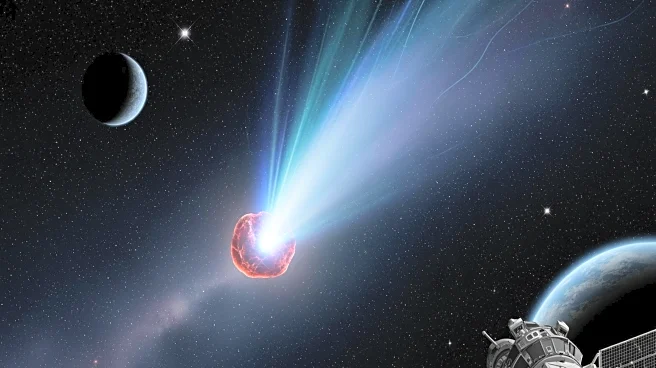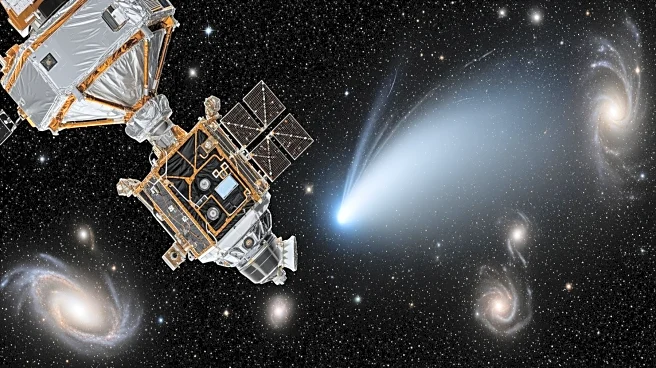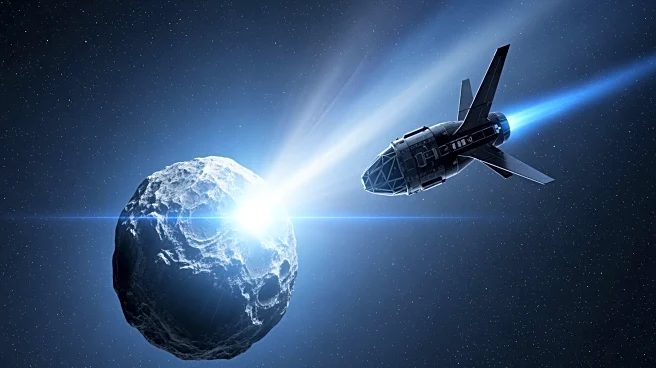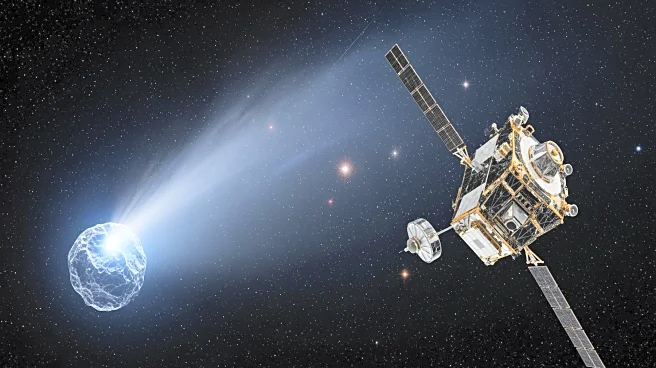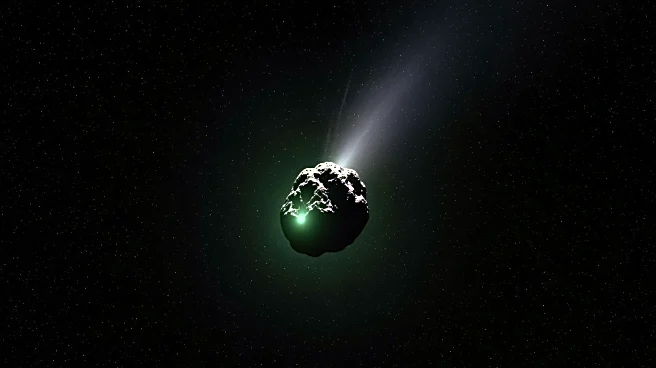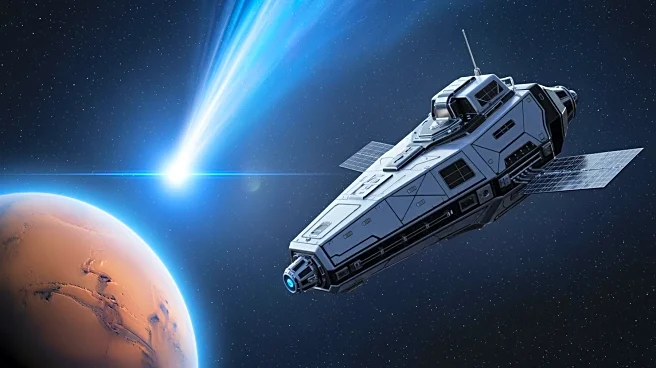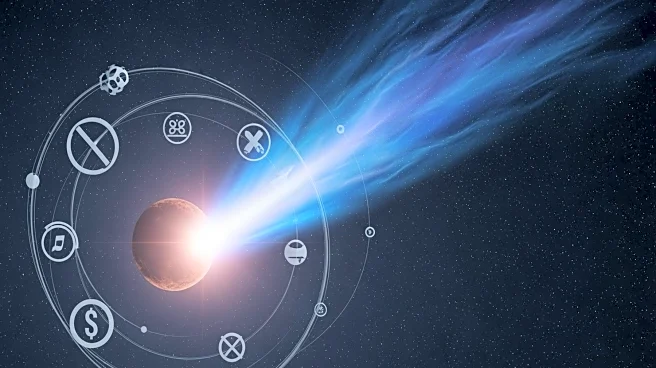What's Happening?
Comet 3I/ATLAS, an interstellar visitor, has re-emerged from behind the Sun and is now visible in the pre-dawn sky. New images from China's Tianwen-1 Mars orbiter and ESA's ExoMars Trace Gas Orbiter have
captured the comet, which is only the third confirmed interstellar object observed. The comet, discovered in July 2025, is on a hyperbolic trajectory and poses no threat to Earth. Scientists are studying its composition and trajectory to learn more about interstellar objects.
Why It's Important?
Interstellar comets like 3I/ATLAS provide unique insights into the composition and formation of other planetary systems. Studying these objects helps scientists understand the diversity of cosmic materials and the processes that shape them. The comet's rich chemical composition offers a rare opportunity to study materials that have been altered by billions of years in interstellar space, potentially informing theories about the origins of life and planetary formation.
What's Next?
As 3I/ATLAS continues its journey, scientists will use various observatories to track its path and analyze its chemical makeup. ESA's JUICE spacecraft plans to observe the comet, with data expected in early 2026. Researchers will compare pre- and post-perihelion data to understand how interstellar space has affected the comet's surface.
Beyond the Headlines
The study of interstellar comets challenges existing models of planetary system formation and offers a glimpse into the materials and processes that occur beyond our solar system. It highlights the importance of international collaboration in space exploration and the need for advanced technology to study distant cosmic phenomena.
